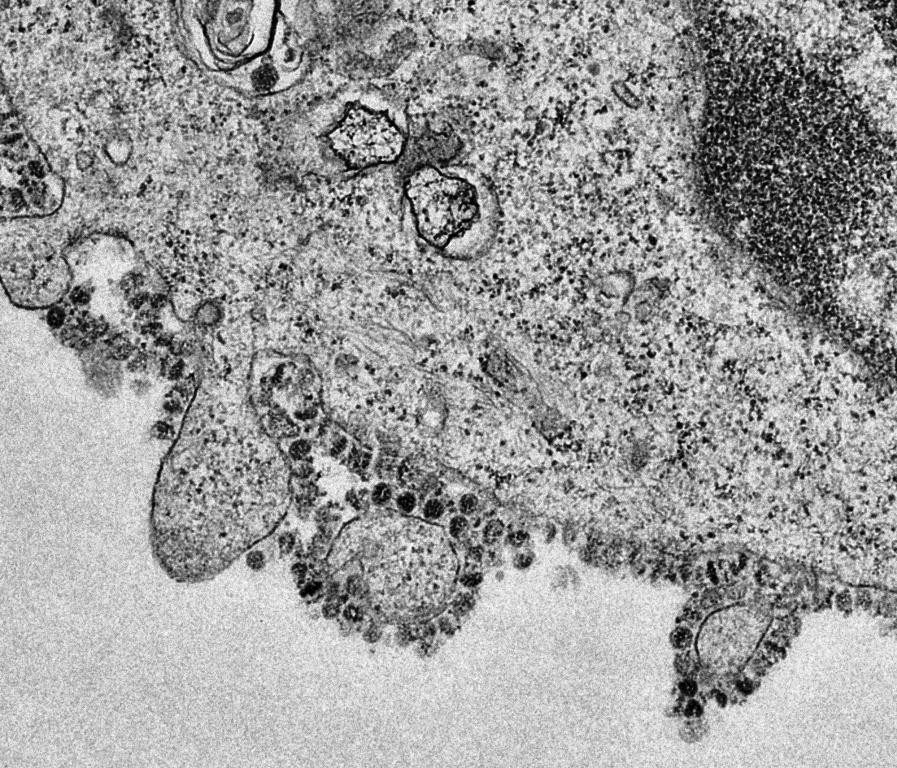by Dr M A Shah
Infections have accompanied humans for millennia. In this twenty-first century, despite being in the era of antibiotics, which began with the discovery by Alexander Fleming in 1928, infectious and inflammatory diseases are still a fatal problem to human well being.
Among many scientific solutions, commonly used surfaces are coated with paint to protect them against mechanical, chemical and weather-related impacts besides improving their aesthetic appearance. From the last decade or so, nanotechnologies are extending the territory of research in many areas including in coatings and in sprays. Smart coatings with nano-materials shall have functions like self-healing, self-cleaning, thermal insulation, besides making surfaces antibacterial and anti-viral.

Reports reveal that the crown-shaped virus (Covid-19) is so strong that it is capable of lingering on surfaces for hours to days, likely contributes to the transmission of the virus, making cloud formation.
Scientists from Princeton University and from elsewhere reported Severe Acute Respiratory Syndrome Coronavirus 2 (SARS-CoV-2), the virus which causes Covid-19 disease was detectable in aerosols for three hours, on copper (though it is old antibacterial material) up to four hours, on cardboards up to 24 hours and on plastic and stainless steel up to three days.
Earlier reports revealed that H1N1, also having nano-dimensions, remain alive for 15 days on door hinges and knobs. This study provides key information about the stability of the virus and it is evident that people may acquire the virus through the air and after touching contaminated objects. Thus, it is reasonable to advise that commonly used surfaces can be coated with nano-materials to avoid the spread of dreadful viruses and infections particularly in healthcare and household settings including nano-spray on highways.
These deadly pathogens can be prevented by revolutionary sprays and this spray should be the first line of defence against these viruses. Recently, a spray developed in Japan by a nanotechnology company Nanotera Group claims that homes and hospitals can be coated with antimicrobial sprays. The Director of the company, Saba claims that the spray is very cheap and can disinfect surfaces for years. This technology is very simple and uses a spray that coats any hard or soft surface except human skin which can kill bacteria and viruses on touching the surface. The spray can also be used for furniture, digital devices, touch screens and textiles.
Coated surfaces will not allow spreading the viruses and fungus and there is no need to disinfect it for around five years. Depending upon the desired function, the nano-materials of titanium dioxide, iron oxide, zinc oxide, amorphous silicon dioxide and silver have been used. It further helps to create attractive designs by special colour effects and few materials are used as transparent coatings, transparency adds many virtues which otherwise is not possible with bulk materials.
Dr Jeremy, Professor of Nanotechnology at the University of Buckingham’s Clore Laboratory highlights the need to diminish the environmental burdens of viruses. The scientists from National Institutes of Allergy and Infectious Disease, at Rocky Mountain Laboratories, compared how the environment affects SARS-CoV-2 and SARS-CoV-1, which causes SARS. SARS-CoV-1, like its successor now circulating across the globe, infected around 8000 in 2002 and in 2003 and was eradicated by case isolation measures and no such case has been detected since 2004. SARS-CoV-1 is human coronavirus mostly related to SARS-CoV-2. In the stability study, the two viruses behaved similarly, but unfortunately yet science fails to explain why Covid-19 has become a much larger outbreak.

If it is not contained properly, it could keep going for a long time even when an antiviral shot arrives. People in general and students in particular need to learn more about how the science of small (nanotechnology) helps in fighting the Covid-19. The novel SARS-CoV-2 coronavirus COVID-19 that emerged in the city of Wuhan, China, last year and has since caused a large scale pandemic and is spreading fast is the product of natural evolution, not engineered in laboratories according to findings published in the journal, Nature Medicine, clearing the doubts which were making rounds in air of many including of my students. Science has always been a well-wisher to humanity and will work for its welfare without any fatigue.
(Author has a doctorate in Condensed Matter Physics and has taught at the King Abdul Aziz University Jeddah. Currently, he is Senior Associate Professor (Principal Investigator) at the Special Centre of Excellence for Nanosciences, at National Institute of Technology Srinagar’s Department of Physics.)















